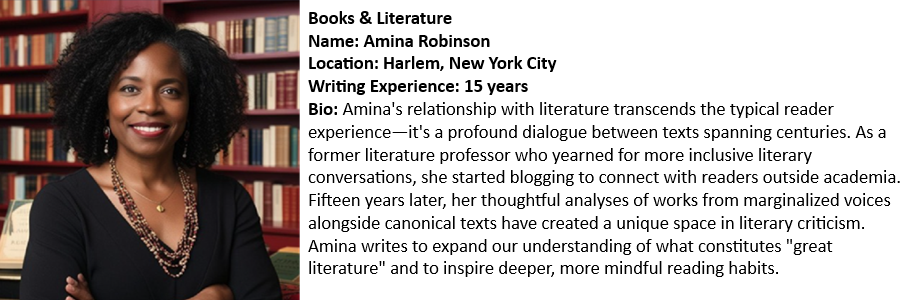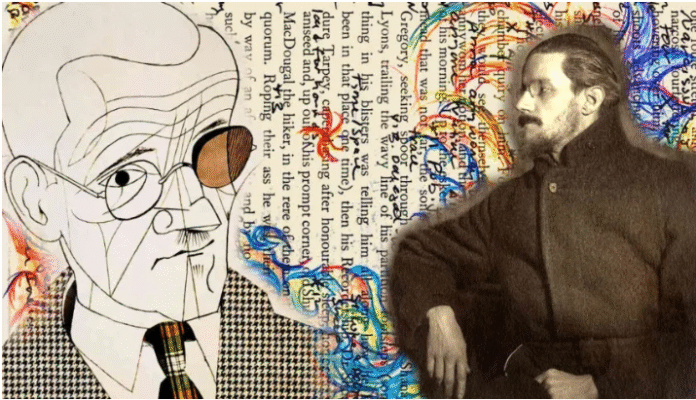Introduction to Stream of Consciousness
Stream of consciousness is a narrative technique that captures the flow of thoughts and feelings running through a character’s mind. Emerging in the early 20th century, this literary style represents a significant departure from traditional narrative forms, which typically adhere to a linear progression and structured plot. Instead, stream of consciousness prioritizes internal monologue and the complexities of human thought, granting readers a more intimate glimpse into characters’ psychological states.
The term itself gained recognition during the works of early modernist writers such as Virginia Woolf, James Joyce, and William Faulkner. These authors effectively employed the technique to explore the intricate realities of human consciousness, illustrating that thoughts are often disjointed and unfiltered. By tapping into this method, writers were able to evoke a more authentic representation of the human experience, contrasting sharply with the rigid storytelling conventions prevalent in earlier literary epochs.
Historically, the stream of consciousness technique was a response to the changing dynamics of the 20th century. The rise of psychoanalysis and a growing interest in the subconscious mind provided fertile ground for this narrative form to flourish. This connection to psychological theory enabled writers to delve deeper into their characters’ subconscious motives, fears, and desires, adding layers of depth to their narratives. In this context, stream of consciousness can be seen as a vital tool in modern literature, enabling authors to challenge and expand the boundaries of storytelling.
Key characteristics of stream of consciousness include a lack of traditional punctuation, free association of ideas, and shifts in time and perspective. This technique often blurs the lines between reality and imagination, compelling readers to engage actively with the text. As we explore the various effects of this style, it is evident that stream of consciousness has greatly impacted modern literature, providing insights into character development, narrative structure, and thematic exploration.
Pioneers of Stream of Consciousness: Joyce, Woolf, and Faulkner
The stream of consciousness technique has been prominently featured in the works of several influential authors, among whom James Joyce, Virginia Woolf, and William Faulkner stand out. These pioneers each employed this narrative style to explore and convey the intricate depths of human thought and experience. Their distinct approaches have collectively enriched modern literature and expanded the boundaries of narrative form.
James Joyce is perhaps the most renowned figure associated with this technique, particularly in his groundbreaking novel, Ulysses. In this work, Joyce meticulously charts the inner lives of his characters through seemingly unfiltered thoughts and impressions. The novel’s structure mirrors the flow of consciousness, allowing readers to traverse the complex mental landscapes of characters such as Leopold Bloom and Stephen Dedalus. This immersive technique grants insights into their desires, fears, and memories, effectively revealing the multifaceted nature of identity and existence.
Similarly, Virginia Woolf’s masterpiece, Mrs. Dalloway, exemplifies the essence of the stream of consciousness method. Woolf adeptly interweaves the thoughts of her characters, capturing fleeting sensations and reflections that characterize their daily lives. Through Clarissa Dalloway’s preparations for a party, Woolf explores themes of time, memory, and mental health. Her use of this narrative technique invites readers into the intimate thoughts of her characters, fostering a deeper emotional connection and understanding of the broader societal context.
William Faulkner, too, contributes significantly to the stream of consciousness tradition with works like The Sound and the Fury. In this novel, Faulkner presents a disjointed narrative through the perspectives of the Compson family, particularly through Benjy, whose mental disabilities shape his perception of reality. Faulkner’s innovative use of fragmented narrative allows readers to experience the characters’ internal struggles against the backdrop of a declining Southern family, thus challenging conventional storytelling methods.
Influence on Contemporary Literature
The stream of consciousness technique, characterized by its flow of thoughts and feelings, has left an indelible mark on modern and contemporary literature. Its roots can be traced back to early 20th-century writers such as James Joyce and Virginia Woolf, who pioneered this narrative style by enabling readers to experience the inner workings of characters’ minds. This method has since evolved, influencing a broad range of authors across various genres, thereby revolutionizing how stories are told in contemporary literature.
In contemporary fiction, writers are increasingly adopting the stream of consciousness technique to delve deeper into psychological complexities and emotional landscapes. This can be seen in the works of authors such as David Foster Wallace and Salman Rushdie, who embrace the fluidity of thought as a means to capture the chaotic nature of modern life. Their narratives often reflect the intricate interplay between reality and perception, inviting readers to engage with characters on a more intimate level.
Moreover, genre fiction has not remained untouched by this innovative approach. In contemporary science fiction and fantasy, for instance, writers like Neil Gaiman and Haruki Murakami have utilized stream of consciousness to blur the lines between dreams and reality. This technique allows them to create rich, multi-layered narratives that effectively mirror the complexities of human experience, enabling readers to explore themes of identity, memory, and existence.
As contemporary writers continue to experiment with the stream of consciousness technique, they are redefining conventional storytelling frameworks. This evolution not only enhances narrative depth but also reinforces the genre’s commitment to showcasing the intricacies of human thoughts and emotions. Consequently, this technique remains a vital force in shaping modern literature, reflecting a diverse range of narratives that resonate with readers across the globe.
Stream of Consciousness and Human Psychology
The stream of consciousness technique effectively mirrors the complexities of human thoughts, emotions, and motivations, allowing readers to delve deep into the psychological landscape of characters. This literary device exposes the inner workings of the mind, creating a more authentic representation of reality. It provides a unique lens through which to examine how individuals experience their environment, reflect on past experiences, and project their fears and desires. By capturing the unfettered flow of thoughts, authors offer insights into the intricacies of mental processes, which are often difficult to articulate in conventional narrative styles.
The psychological implications of this technique extend beyond mere narrative form, aligning with established psychological theories such as those proposed by Sigmund Freud and Carl Jung. Freud’s exploration of the unconscious mind reveals how repressed memories and desires shape an individual’s thoughts and behaviors. The stream of consciousness technique serves as a vessel for these repressed elements, allowing characters’ hidden emotions to surface. Similarly, Jung’s concept of archetypes and the collective unconscious can be examined through this narrative method, as it illustrates how universal human experiences are mirrored within a character’s internal dialogue. This approach not only enriches literary analysis but also enhances the reader’s understanding of psychological development.
Furthermore, the stream of consciousness allows readers to engage more deeply with the characters’ emotional complexities. As characters navigate through their thoughts, the audience gains an awareness of their motivations, fears, and aspirations, creating a deeper connection to their plight. This sense of intimacy fosters empathy, as readers can relate to the psychological struggles depicted in the narrative. Ultimately, the integration of stream of consciousness in literature not only revolutionizes storytelling but also enhances our understanding of human psychology, serving as a bridge between art and the study of the mind.


